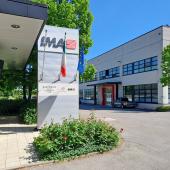The Italian beverage market – Data 2014
In relation to global beverage production (alcoholic and non-alcoholic), Italy ranks fifth among western countries, with a 14% share, behind Germany (22%), the UK (20%), France (17%) and Spain (16%). Numbers on packaging.
European consumption of beverages (alcoholic ones like wine, beer and spirits, as well as non-alcoholic) varies significantly from country to country, depending on product type.
There are of course differences in market shares in the different categories.
Italy, for example, holds a preeminent position in mineral water, with a share of approximately 64%, as well as wine and sparkling wines, in which it ranks among the world’s top three producers along with France and Spain, with a share of approximately 16%. In the large category of drinks (carbonated and flat, fruit juices and energy drinks), in a European market totalling approximately 88 billion liters, Italy holds a share of about 7%.

Alcoholic beverages in 2014-2015
In 2014, 21,252 million liters of beverage were produced in Italy, 21.6% of which alcoholic and 78.4% non-alcoholic.
Globally, following the decline in production during the two years of 2008-2009 and the recovery in 2010 and 2011, alcoholic beverages experienced a significant crisis during the three-year period of 2012-2014, which affected exports, but especially domestic demand. Other European countries also felt the negative effects of the crisis.
The following production trends are estimated for 2015: about +0.5-1% for wine, +2-3% for beer, +0.5% for spirits and +1-1.5% for vermouth.
Non-alcoholic beverages in 2014-2015
Non-alcoholic beverages ended 2014 with a 1% drop in production, which compounds with the approximate 13% decline during 2013. According to early analysis, 2015 should see a 2-3% recovery.
The main sector, in quantitative terms, is mineral water, which represents 72% of total production, followed by carbonated soft drinks with an 18% share.
Non-alcoholic beverages continue to be conditioned mainly by domestic demand, which accounts for approximately 90% of total production.
Also in quantitative terms, only mineral water has significant exports, at 68% of the total in this category.
Furthermore, mineral water should end 2015 with a production growth of approximately 2%, followed by an increase in both domestic demand and exports.
Soft drinks, which are mainly tied to the domestic market, are estimated to grow by about 6-7% in 2015 following the negative trend of 2013-2014.
Overall, after two years of crisis, all other non-alcoholic sectors (fruit juices, energy drinks, tea-based and flavored flat drinks) have managed to show progressive improvement in their growth trend (+1.5-2.5%).
Data on beverage packaging
Alcoholic beverages. Packaging, as is known, remains a strategic variable in the beverage sector. In addition to protecting the product and enabling its handling, it represents an indispensable marketing tool in this area.
The mix of packaging types for alcoholic beverages is dominated by glass bottles, although other types are also in wide use.
In wine, for example, the glass bottle has a 69% share, the polylaminate cellulosic container 11%, the bag-in-box 11%, and the remaining 9% is divided among PET and glass Chianti bottles, PET bottles and kegs for draught distribution.
While 74% of beer is distributed in recyclable and non-recyclable glass bottles, 11% is sold in cans, usually aluminium, and 15% is distributed from a tap (this form is growing in light of explicit preference among tavern style restaurants).
The glass bottle remains the only packaging solution for spirits and vermouth.

Non-alcoholic beverages. There is a much greater variety of packaging solutions adopted in the non-alcoholic beverage area.
The PET bottle clearly predominates and shows a growth trend in the sectors of mineral water and carbonated drinks.
The glass bottle continues to hold a strong position, particularly in mineral water with the recyclable variety, where bottles custom made for bottlers’ needs are spreading. However, recycling is limited to horeca.
The most widespread packaging for carbonated drinks, after PET bottles, is the aluminium can.
The polylaminate cellulose container predominates in fruit juices, although, in this case, the PET bottle is showing significant growth.
In terms of packaging, the PET bottle also predominates in the area of flat drinks like tea, flavored fruit drinks and energy drinks, where aluminium cans and plastic cups with easy peel aluminium top also hold a strong position.
The cheerpack is also used for non-alcoholic drinks, and shows high potential for spreading in use.
Packaging used for beverages continues to implement preventive actions in line with EU directives on environmental impact. The pursuit of weight reduction carries on, without compromising the container’s reliability, or the use of recycled materials.
Plinio Iascone
Istituto Italiano Imballaggio

















